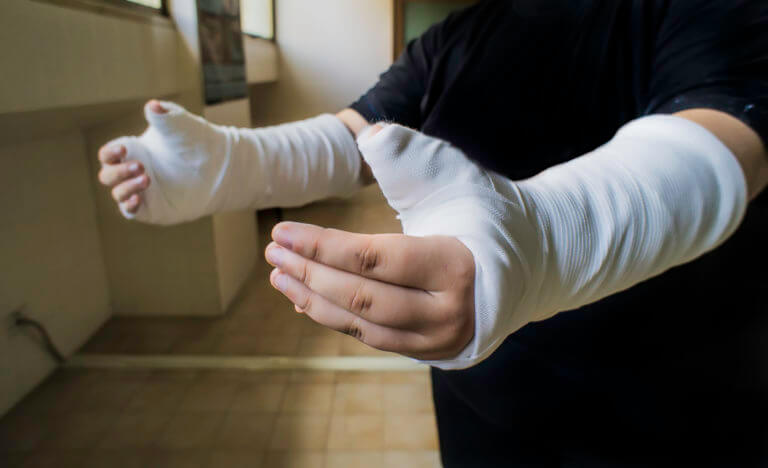- Home
- Fracture Treatment: Faster And Right Way
Fracture Treatment: Faster And Right Way
What is a Bone Fracture ?
When you break a bone, healthcare providers call it a bone fracture. This break changes the shape of the bone. These breaks may happen straight across a bone or along its length. A fracture can split a bone in two or leave it in several pieces.
A fracture is a broken bone, the same as a crack or a break. A bone may be completely fractured or partially fractured in any number of ways (crosswise, lengthwise, in multiple pieces).

Types of Fractures
Although bones are rigid, they do bend, or give, somewhat when an outside force is applied. However, if the force is too great, bones will break, just as a plastic ruler breaks when it is bent too far. The severity of a fracture usually depends on the force that caused the break. If the bone’s breaking point has been exceeded only slightly
Common types of fractures include:
- Stable fracture. The broken ends of the bone line up and are barely out of place.
- Open (compound) fracture. The skin may be pierced by the bone or by a blow that breaks the skin at the time of the fracture. The bone may or may not be visible in the wound.
- Transverse fracture. This type of fracture has a horizontal fracture line.
- Oblique fracture. This type of fracture has an angled pattern.
- Comminuted fracture. In this type of fracture, the bone shatters into three or more pieces.
BOOK AN APPOINTMENT
You Don't Have To Live With Pain
Dr. Rahul Bade is a specialist Knee & Shoulder Surgeon.
Cause
The most common causes of fractures are:
- Trauma. A fall, motor vehicle accident, or tackle during a football game can all result in fractures.
- Osteoporosis. This disorder weakens bones and makes them more likely to break.
- Overuse. Repetitive motion can tire muscles and place more force on bone. This can result in stress fractures. Stress fractures are more common in athletes.
Symptoms
Many fractures are very painful and may prevent you from moving the injured area. Other common symptoms include:
- Swelling and tenderness around the injury
- Bruising
- Deformity — a limb may look out of place, or a part of the bone may puncture through the skin
Treatment
Cast Immobilization
A plaster or fiberglass cast is the most common type of fracture treatment, because most broken bones can heal successfully once they have been repositioned and a cast has been applied to keep the broken ends in proper position while they heal.
Functional Cast or Brace
The cast or brace allows limited or controlled movement of nearby joints. This treatment is desirable for some, but not all, fractures.
Traction
Traction is usually used to align a bone or bones by a gentle, steady pulling action. It is not typically used as a definitive treatment.
External Fixation
In this type of operation, the doctor places metal pins or screws into the broken bone above and below the fracture site. The pins or screws are connected to a metal bar outside the skin. This device is a stabilizing frame that holds the bones in the proper position while they heal.
In cases where the skin and other soft tissues around the fracture are badly damaged, an external fixator may be applied until you can tolerate surgery.


